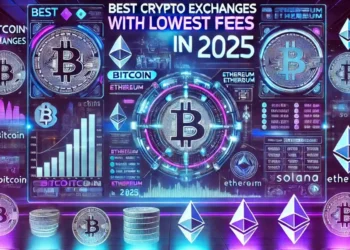Digital currency, and Bitcoin as its figurehead, seems to be on a collision course with the mainstream. As nations and banks scramble to investigate creating their own digital currency, the private sector has already provided the solution with decentralized alternatives.
Let’s take stock of the situation Bitcoin is currently in and how the future of online transactions will look if decentralized cryptocurrencies become widely accepted.
Bitcoin, The Most Accepted Digital Currency
Bitcoin needs no introduction in many online spaces. It’s the most popular cryptocurrency and is accepted by many businesses all over the world.
It’s particularly useful for online transactions and as such, it is also accepted by online slots real money games where it is treated as good as the dollar. The adoption of Bitcoin in these heavily online industries is no surprise given its mission statement of securing and anonymizing transactions.
Bitcoin enjoys more prestige than many other projects. It is accepted by Microsoft, Virgin, and even Home Depot, and many establishment market forces have recognized its legitimacy.

Since its start in the wake of the 2008 financial crisis, Bitcoin’s value grew exponentially through the 2010s and many believe it’ll do the same in the 2020s. Secured by the fact there are only 21 million available, its scarcity should support its value over time.
Benefits Of Digital Currency
There are several non-negotiable benefits that digital currencies have over the current online payment infrastructure. Firstly, digital currencies are capable of faster payments than wire transfers.
Similarly, by using blockchain architecture, a lot of the busywork of validating the transaction can be handled automatically through smart contracts. It makes the international transfer of money much easier, with no added fees.
This would all be available 24/7, not subject to business hours like banks and other financial institutions are.
A good digital currency should also be decentralized so that the currency cannot be manipulated by any one person or group of people to cause inflation or other bad economic habits left over from fractional reserves.
A system such as this would also prize anonymity and afford everybody the same opportunities to send and receive money, particularly the unbanked.
The drawbacks are that there is a steep learning curve to reach widespread adoption, though this is something that front-end developers of apps and services can improve upon. It’s also a fractured market, with many different options out there, but instant exchanges through smart contacts can mitigate this.
A unified push for digital currencies could emerge through central bank digital currencies (CBDCs) but they come with their concerns over centralization, which would take the crypto out of cryptocurrency and abandon the decentralized goal of popular currencies like Bitcoin.
The Future Of Digital Currency
Fortunately, the Ethereum blockchain is currently the largest public ledger in the world, on which most cryptocurrencies are recorded. Its proprietary currency Ether (ETH) is the second-largest cryptocurrency, used to pay fees related to the network as other currencies are minted and exchanged.

This means that the future of cryptocurrencies, estimated to be worth $1 trillion today, should be on decentralized blockchains that benefit their users. As clear winners emerge from the scene and volatility dies down, adopting digital currencies is sure to improve.
Like anything else, digital currencies need to become convenient, accessible, and affordable first.
Follow us on our social networks and keep up to date with everything that happens in the Metaverse!
Twitter Linkedin Facebook Telegram Instagram Google News












































